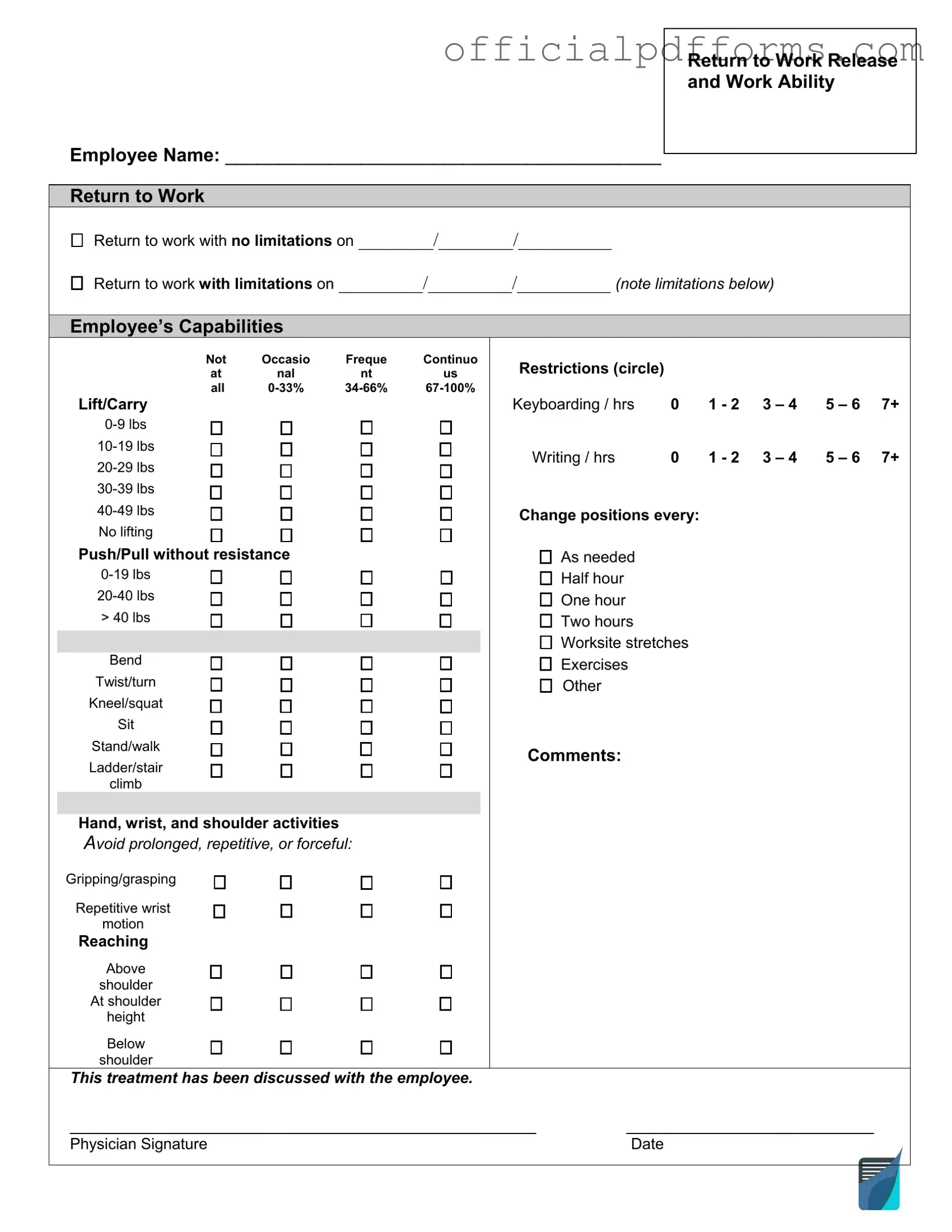A Work Release form is a document that allows individuals to participate in work-related activities while they are under supervision or serving a sentence. This form is essential for ensuring that individuals can gain work experience, earn income, and fulfill any court-ordered obligations.
Individuals who are currently incarcerated or under supervision and wish to engage in employment must complete the Work Release form. This includes those on probation, parole, or serving time in a correctional facility.
The Work Release form typically requires the following information:
-
Personal details, including name, address, and contact information.
-
Details about the proposed employment, such as the employer's name, address, and contact information.
-
Dates and hours of work.
-
Signature of the individual and possibly a witness or supervisor.
After completing the Work Release form, submit it to the designated authority within your correctional facility or supervision program. This may include a case manager, probation officer, or other designated personnel. Ensure you keep a copy for your records.
Once submitted, the form will be reviewed by the appropriate authorities. They will assess the employment opportunity and your eligibility. You will receive notification regarding the approval or denial of your request. This process may take several days, so plan accordingly.
Can my Work Release request be denied?
Yes, requests for Work Release can be denied. Common reasons include:
-
Ineligibility due to the nature of the offense.
-
Concerns about the safety of the individual or the community.
-
Failure to meet specific requirements outlined in the supervision program.
What should I do if my Work Release request is denied?
If your request is denied, you can ask for clarification on the reasons for the denial. You may also have the option to appeal the decision or reapply after addressing any issues that led to the denial. Consult with your case manager or legal advisor for guidance on the next steps.
